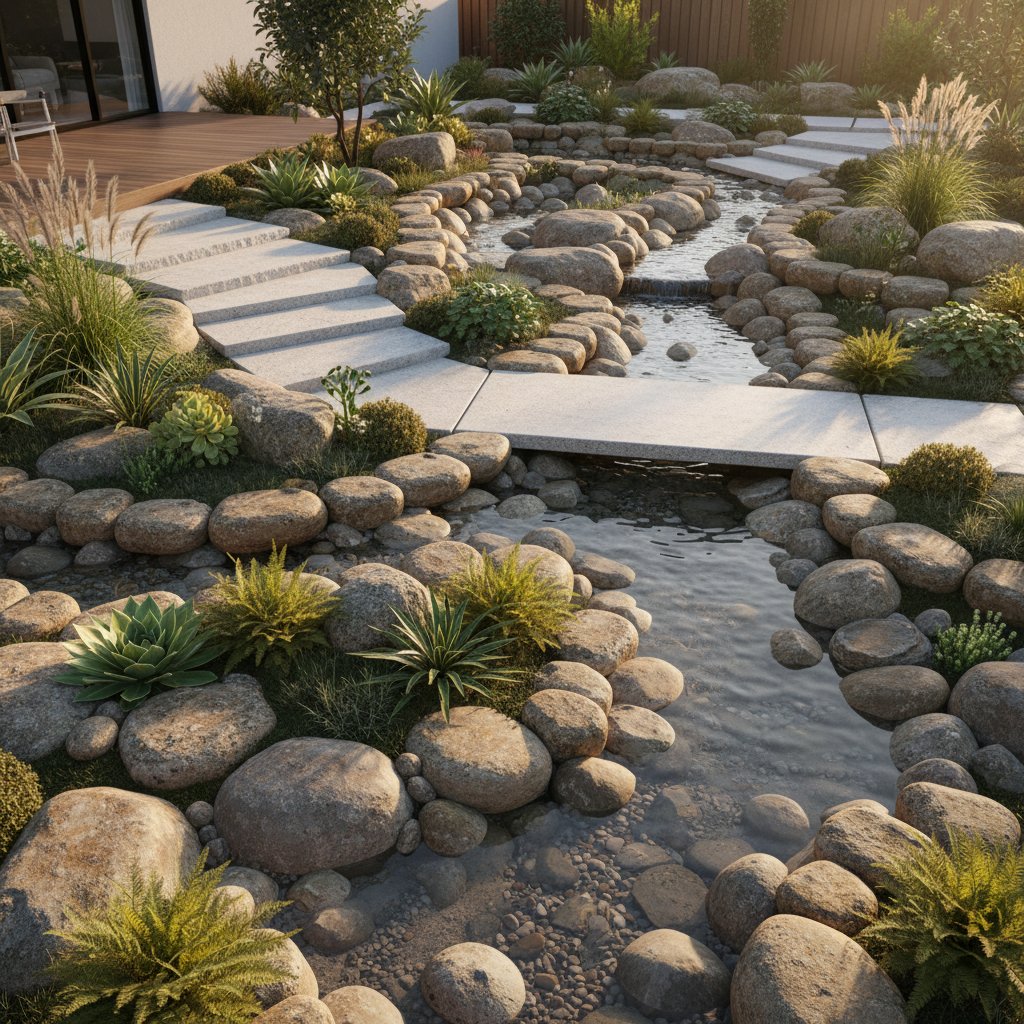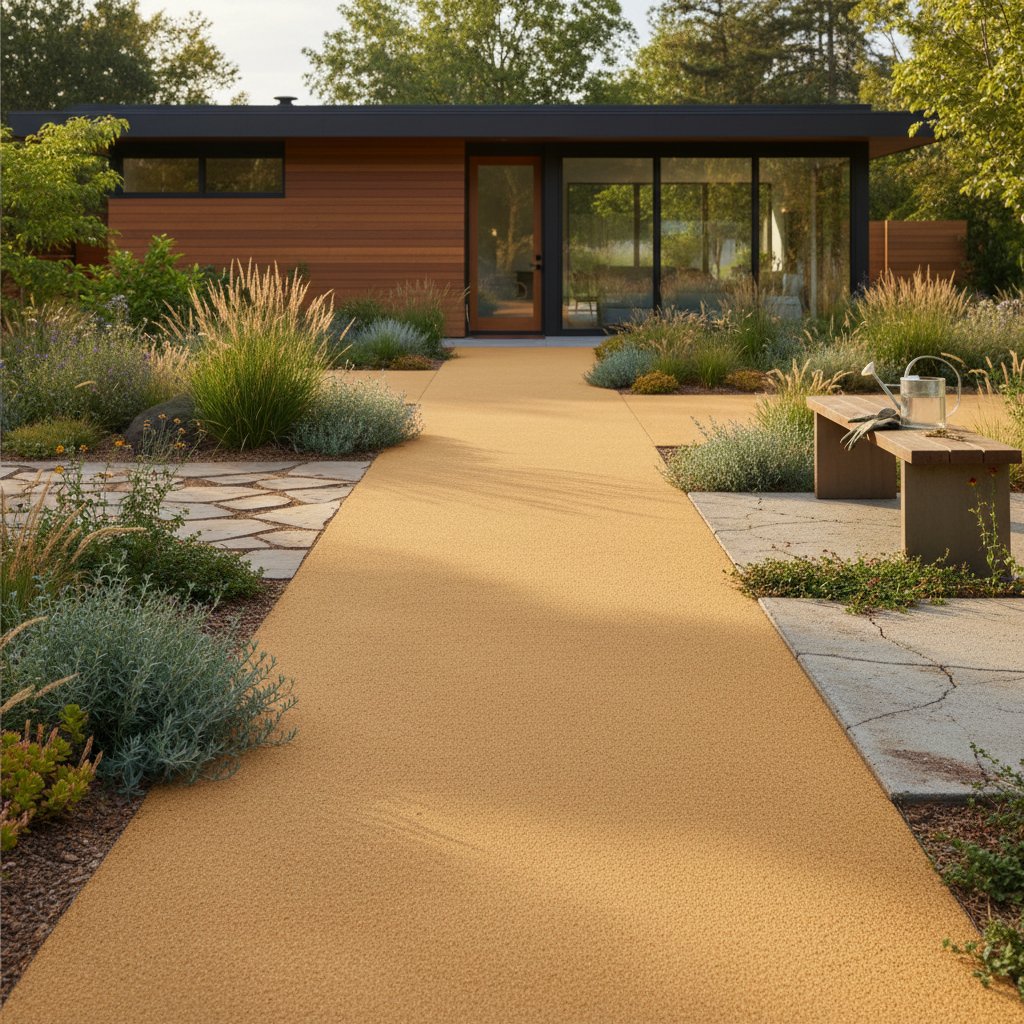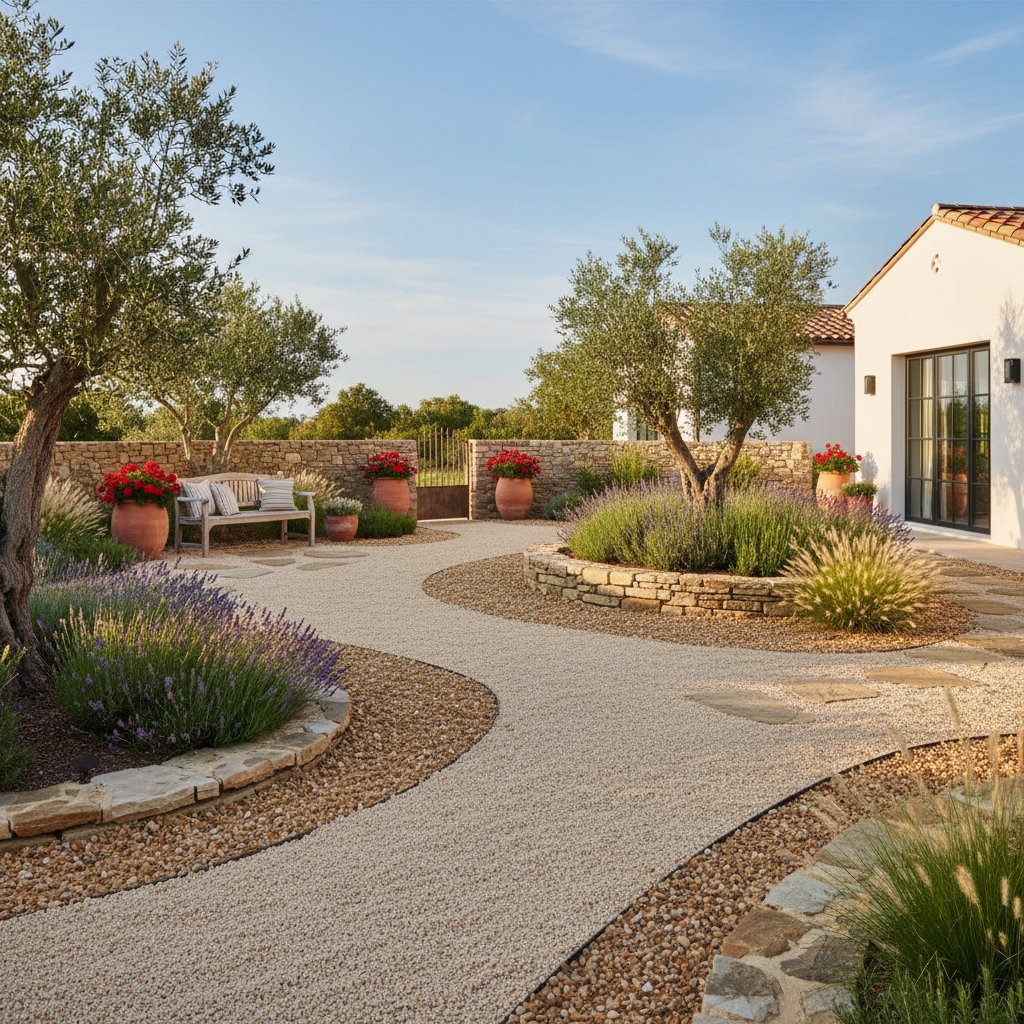Why Decomposed Granite Revolutionizes Budget Yards
Homeowners seeking to enhance outdoor spaces often face high costs for durable surfaces. Decomposed granite emerges as an effective solution, delivering a refined appearance at significantly lower expenses. Suitable for patios, walkways, driveways, and garden edges, this material balances cost savings with aesthetic appeal and minimal upkeep requirements.
What Decomposed Granite Is and Why It Works
Decomposed granite consists of weathered granite rock broken into small, gravel-sized particles. Processing determines its texture, ranging from coarse to fine, while colors such as golden brown, reddish tan, and gray complement diverse landscapes. This natural composition ensures seamless integration with surrounding elements.
When compacted, decomposed granite forms a stable yet flexible surface ideal for foot traffic and light loads. Superior drainage prevents water accumulation, and proper installation inhibits weed penetration. These attributes position it as a viable alternative to pricier options like concrete, pavers, or flagstone, offering longevity without excessive investment.
Cost Comparison You Can Rely On
Financial considerations guide most hardscaping decisions. Decomposed granite material typically ranges from 30 to 70 cents per square foot. Professional installation elevates the total to 2 to 5 dollars per square foot, far below the 6 to 10 dollars for poured concrete or the 12 dollars or more for paver installations.
Consider a 400-square-foot patio: decomposed granite totals under 2,000 dollars, whereas concrete often exceeds 4,000 dollars. Such disparities free up funds for complementary features like outdoor lighting, plantings, or furniture, maximizing overall project value.
Installation Basics for a Lasting Surface
Proper installation ensures decomposed granite performs optimally over time. Follow these steps for reliable results:
-
Excavation and base preparation: Clear 4 to 6 inches of existing soil to accommodate the base and granite layers.
-
Laying the base layer: Apply 2 to 3 inches of compacted gravel for stability and enhanced drainage, minimizing future shifts.
-
Adding the decomposed granite: Distribute in 1.5- to 2-inch layers; lightly moisten and compact each before proceeding.
-
Optional stabilizer: Incorporate a resin binder for increased hardness in high-traffic zones like driveways.
-
Edging: Install metal, stone, or wood borders to contain the material and maintain defined boundaries.
Homeowners can complete modest areas, such as pathways, over a weekend using basic tools. Larger endeavors require professional machinery for uniform compaction and precise grading.
Design Flexibility That Fits Any Yard
Decomposed granite accommodates various aesthetic preferences, from winding garden paths to structured modern patios. Its color palette harmonizes with materials like brick, wood, or stone, enhancing overall cohesion.
In patio designs, integrate flagstone or concrete pavers within the granite base, using it to fill joints for a secure, visually appealing mosaic. Pathways benefit from its soft texture, fostering a welcoming, informal atmosphere. Within vegetable gardens, it provides dust-free access routes that preserve soil integrity.
Maintenance That Saves Time
Decomposed granite demands little ongoing attention once established. Periodic raking maintains evenness, and replenishing a thin top layer every few years rejuvenates appearance. A subsurface weed barrier further limits vegetation intrusion.
Permeable properties facilitate rapid rainwater infiltration, eliminating mud and pooling. On slopes, stabilizers or reinforced edging mitigate erosion risks. Spot repairs involve adding material to depressions, moistening, and recompacting for seamless restoration.
Environmental and Practical Benefits
As a naturally derived product, decomposed granite avoids synthetic additives and energy-heavy production processes. Its permeability promotes groundwater recharge, curbing runoff and fostering healthier soil conditions, particularly in arid regions.
The material's lighter tones reflect solar heat, rendering surfaces cooler than dark alternatives like asphalt or concrete during summer months. Local sourcing in many areas reduces transport-related emissions, aligning with sustainable practices.
Comparing Decomposed Granite to Other Surfaces
Selecting the right material involves weighing pros and cons against specific needs.
Decomposed Granite vs. Gravel: While both prove economical, decomposed granite compacts more firmly for smoother traversal and reduced displacement compared to loose gravel's tendency to scatter.
Decomposed Granite vs. Concrete: Concrete delivers permanence and sleekness at higher costs, with vulnerability to cracking. Decomposed granite's adaptability resists fractures, provides gentler footing, and integrates naturally with greenery.
Decomposed Granite vs. Pavers: Pavers yield precise patterns and robustness for vehicular use, yet demand intricate setup. Decomposed granite mimics these effects affordably through edging and borders, bypassing mortar requirements.
When to Use Stabilized or Loose DG
Decomposed granite appears in loose or stabilized variants, each suited to particular applications.
Loose DG suits low-traffic settings like garden trails or lounging zones, offering a textured, organic vibe with simple setup. It may experience minor movement from intense rain or use.
Stabilized DG blends in a binding agent for a rigid finish that withstands erosion and supports heavier loads. This option incurs 1 to 2 dollars more per square foot but minimizes upkeep in demanding areas.
Opt for stabilized versions in patios or driveways; reserve loose for ornamental or light-duty paths to optimize expense and style.
Common Mistakes to Avoid
Certain oversights compromise decomposed granite's durability. Omitting the gravel base invites uneven subsidence. Applying excessive thickness in one go leads to unstable pockets.
Compact each layer meticulously and secure perimeter edging. Address slopes with terracing or diversion channels to manage runoff. Advance planning of dimensions and contours prevents post-installation adjustments, ensuring a resilient outcome.
Planning Your Decomposed Granite Project
Decomposed granite enables cost-effective yard enhancements without sacrificing quality. Tackle minor tasks independently or engage experts for expansive features like driveways.
Evaluate usage patterns: envision patios for gatherings, paths linking plantings, or driveways blending with natural surroundings. Sketch layouts, measure areas, evaluate loose versus stabilized pricing, and select hues attuned to your property's palette.
This approach yields durable, attractive exteriors that endure, proving accessible elegance requires neither extravagance nor environmental compromise.



